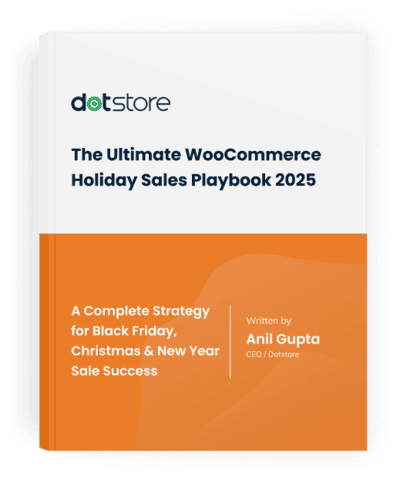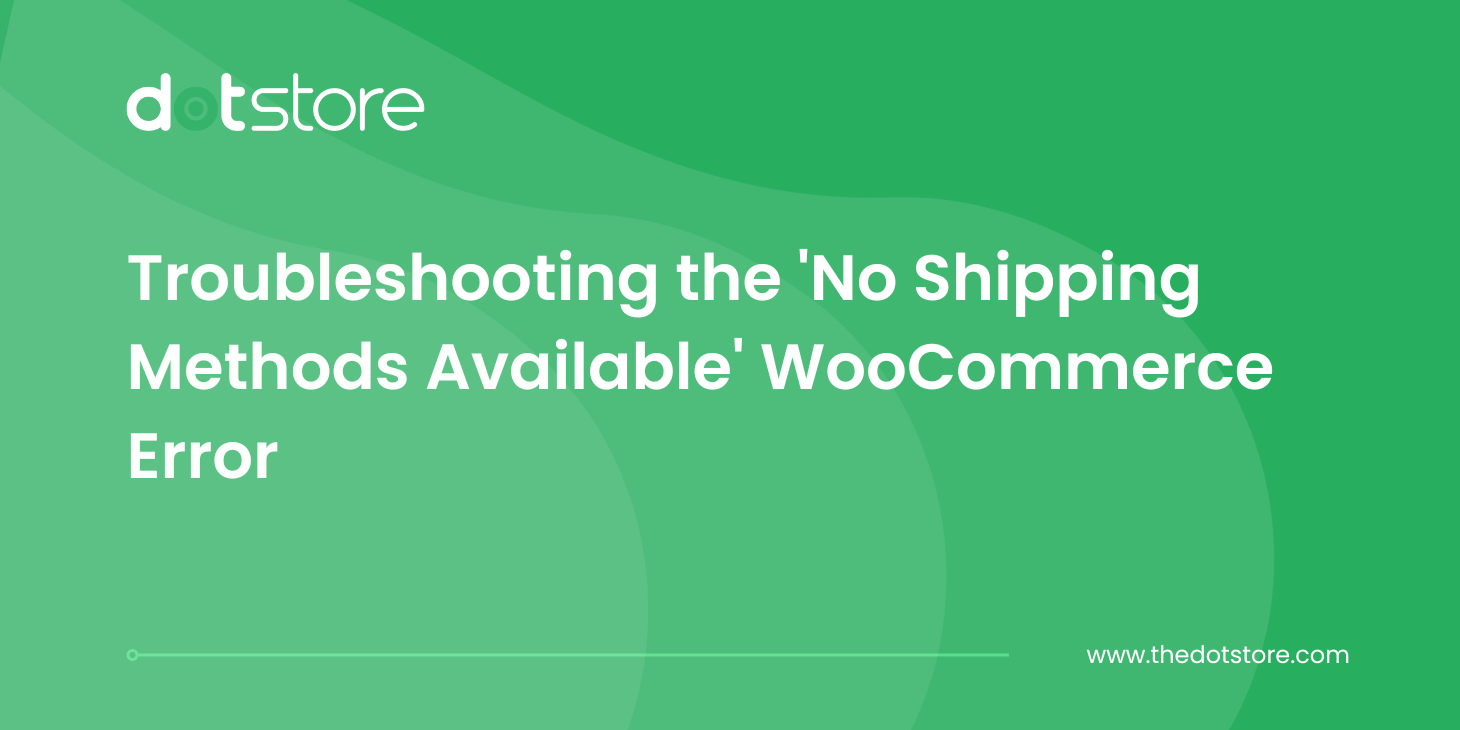Table of Contents
Key Takeaways
- WooCommerce Store Readiness Checklist for Q4 starts with early preparation, at least two weeks before holiday sales begin.
- 7 key plugins can help handle fraud prevention, extra fees, shipping rules, payments, stock tracking, quotes, and cart recovery.
- Keep pricing transparent by showing all fees and delivery costs upfront during checkout.
- Protect your profit margins by using conditional rules for payments and shipping methods.
- Track key metrics like conversions, shipping profit, fraud rate, and stock accuracy throughout the holiday season.
The final quarter of the year brings the biggest shopping surge of all i.e. Black Friday, Cyber Monday, Christmas, and New Year. It’s also when stores face the most stress.
Traffic spikes, stock sells out faster, and support requests double. If your store isn’t optimized, small issues can become big revenue losses.
By preparing early with the right WooCommerce plugins, you can improve checkout experience, reduce costs, and increase conversions.
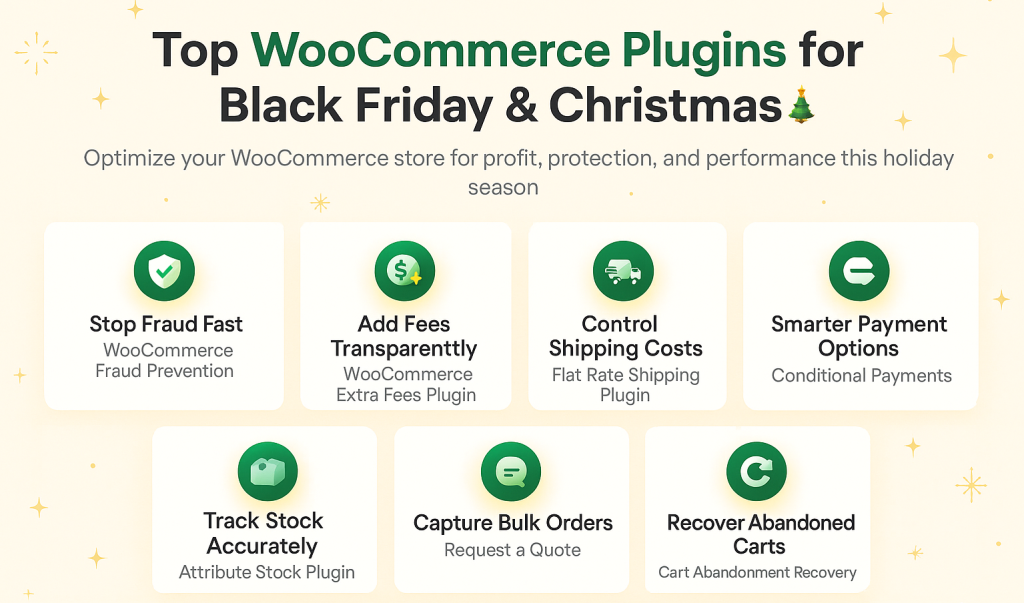
This guide walks you through the 7 must-have plugins that form a complete Q4 readiness checklist.
Top WooCommerce plugins for Black Friday and Christmas
1. Stop Fraud Before It Hurts Your WooCommerce Store
Fraudulent orders and spam signups increase during holiday sales. Protecting your payment flow is the first step in your WooCommerce Q4 optimization.
Recommended plugin 👉 WooCommerce Fraud Prevention by Dotstore.
- Detects risky orders using IP, email, and location filters
- Blocks repeat offenders and disposable emails
- Adds reCAPTCHA on checkout for bot protection
WooCommerce Fraud Prevention
Equip your store with our feature-rich fraud prevention plugin to reduce risk and safeguard your profits.
14-day, no-questions-asked money-back guarantee.
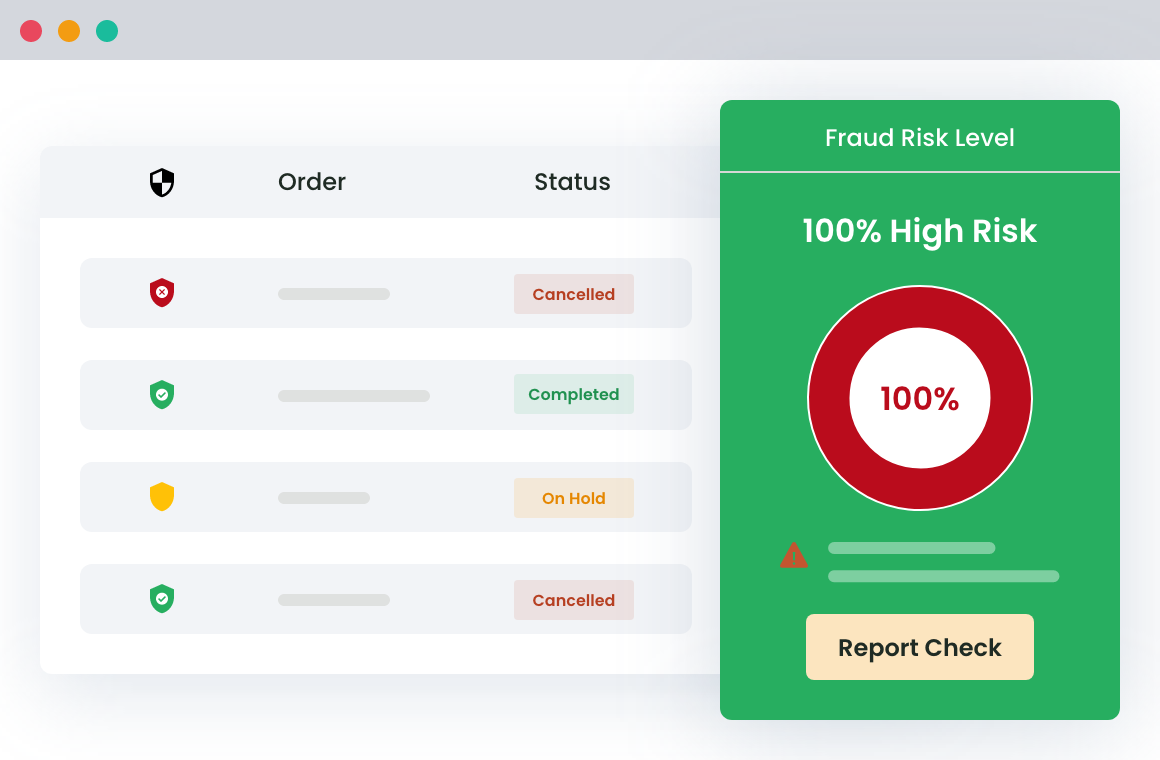
Start in “monitor” mode for a few days. Review flagged orders before switching to full blocking.
Fewer WooCommerce chargebacks and less manual review work.
2. Add Extra Fees for Holiday Operations
Holiday logistics can increase costs on gift wrapping, weekend delivery, or special packaging. Instead of losing profit, show these charges transparently.
Recommended plugin 👉 WooCommerce Extra Fees Plugin
- Adds date-based surcharges for holidays
- Applies fees by cart total, location, or payment type
- Displays fees clearly at checkout and in the cart
WooCommerce Extra Fees
Make profits from every confirmed sale through smart, conditional fees.
14-day, no-questions-asked money-back guarantee.
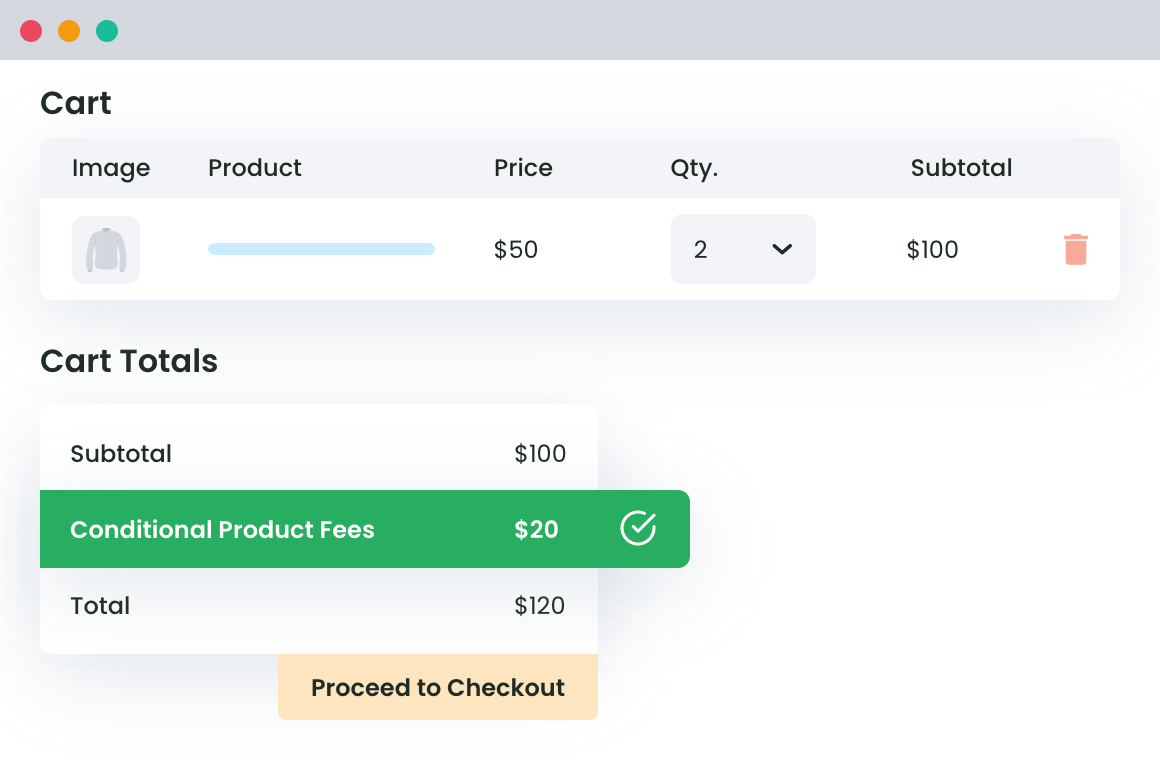
Always show fees upfront in checkout or FAQs to avoid surprises and complaints.
Better transparency and fewer refund complaints.
3. Control Shipping Costs with Smart Flat Rates
Shipping is one of the biggest profit leaks during Q4. Heavy orders, remote zones, and mixed carts can cause costs to spiral.
Recommended plugin 👉 Flat Rate Shipping Plugin for WooCommerce
- Sets rules by product, category, or order weight
- Defines per-item or per-zone shipping costs
- Supports Local Pickup for urgent buyers
Advanced Flat Rate Shipping Methods
Boost your WooCommerce store’s revenue with flexible shipping options. Your business deserves the best!
14-day, no-questions-asked money-back guarantee.
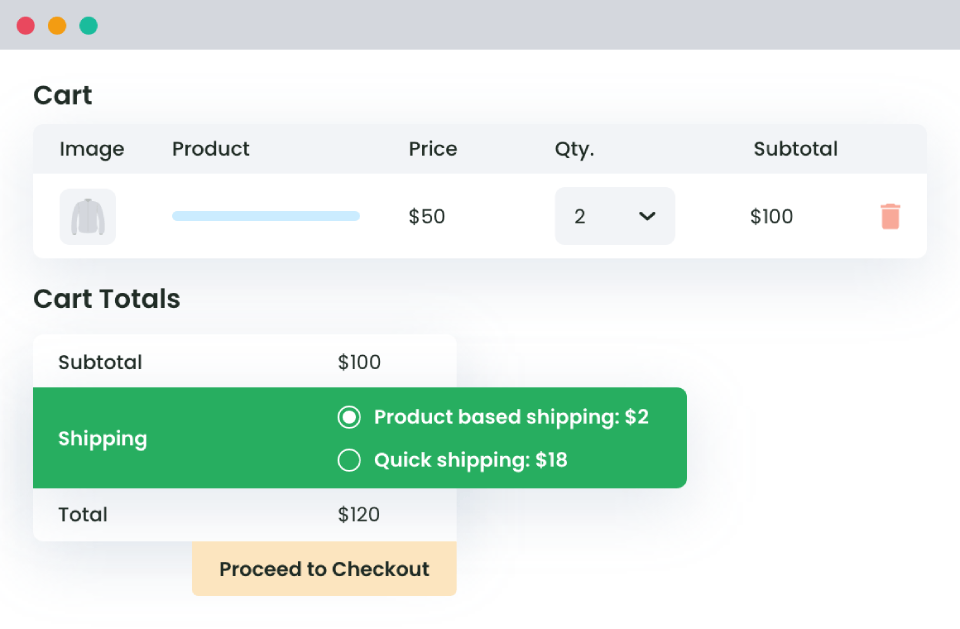
Create a special “holiday packing” rule in advance for large orders to avoid unexpected losses.
Predictable shipping profit and happier customers.
4. Offer Payment Methods That Convert (and Block Ones That Don’t)
Shoppers now expect digital wallets and Buy Now, Pay Later (BNPL) options. At the same time, high-risk payment methods like COD can lead to fraud or returns.
Recommended plugin 👉 Conditional Payments for WooCommerce
- Shows or hides payment options based on cart, location, or product
- Adds gateway-specific fees if needed
- Restricts COD for high-risk orders or digital goods
Conditional Payments For Woocommerce
Reduce risk and supercharge your conversions with strategic payment limitations.
14-day, no-questions-asked money-back guarantee.
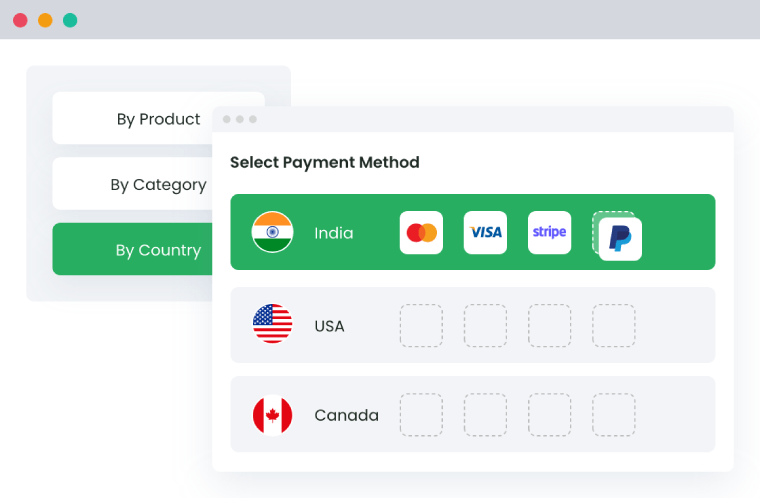
Enable BNPL or wallets for carts above your average order value, and keep COD limited to trusted locations.
More completed checkouts and fewer risky transactions.
5. Track Stock at the Attribute Level
A top Q4 challenge is running out of the right product variation. Standard WooCommerce inventory tracks products, not attributes like size or color.
Imagine this: a customer adds a red, size M hoodie to their cart, but it shows as out of stock even though you have inventory. These “phantom stock errors” happen when WooCommerce doesn’t track stock properly at the attribute level.
Recommended plugin 👉 WooCommerce Attribute Stock Plugin
- Shares inventory across variations (e.g., all “Medium Red” shirts)
- Sends low-stock alerts per attribute
- Prevents overselling and refund headaches
Attribute Stock
Unlock Next-Level Stock Management with Attribute Stock Plugin.
14-day, no-questions-asked money-back guarantee.
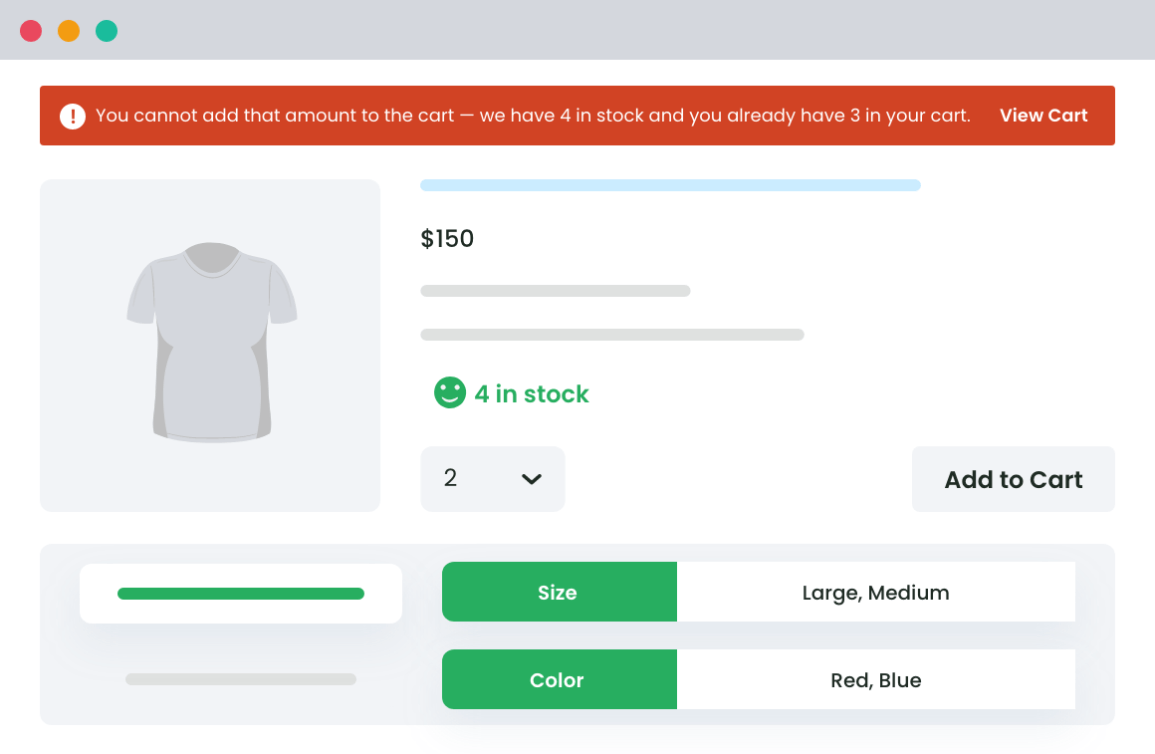
Add buffer stock for your best-selling variants (like common shoe sizes) to avoid going OOS too early.
Accurate stock counts and smoother fulfillment.
6. Capture B2B and Bulk Orders with ‘Request a Quote’
Q4 isn’t just for individual buyers. It is also the time when businesses place bulk order for gifts, employee perks, and events. If you don’t have a quote system, you may lose these high-value orders. A simple “Add to Cart” button isn’t enough for them.
Recommended plugin 👉 Request a Quote for WooCommerce
- Lets buyers request pricing directly on product pages
- Sends automatic quote emails or PDFs
- Works alongside normal Add to Cart flow
Request Quote For WooCommerce
Sell products and services without a fixed price to your catalog and allow customers to request custom quotes.
14-day, no-questions-asked money-back guarantee.
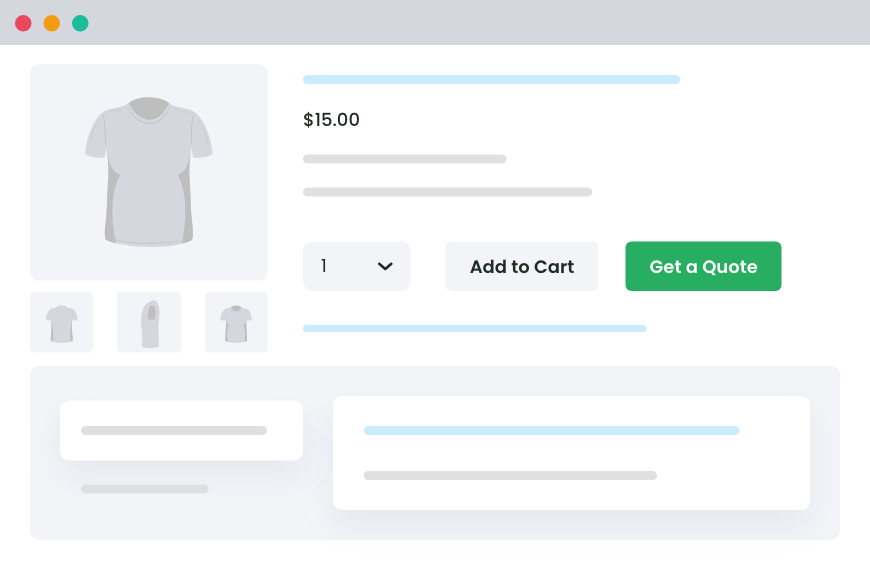
Respond to quote requests within four hours. Fast replies close more deals during the busy season.
New revenue from wholesale and corporate customers.
7. Recover Lost Revenue with Abandoned Cart Emails
Cart abandonment is the silent revenue killer of ecommerce. Nearly 70% of carts are abandoned globally, often due to distractions or hesitation.
Recommended tools:
Cart Abandonment Recovery by CartFlows helps WooCommerce store owners bring back lost sales by automatically tracking abandoned carts and sending personalized follow-up emails. It allows you to schedule multiple reminders, include dynamic coupons, and fully customize messages to match your brand.
AutomateWoo abandoned cart emails helps recover sales by automating follow-up messages based on user behavior. It lets you schedule multiple email steps, insert dynamic coupons for incentive, and stop sending once the cart is converted.
Win back 10–30% of lost sales automatically.
The Two-Week Q4 Readiness Sprint
You don’t need months to prepare your WooCommerce store for Q4.
If you dedicate just two focused weeks, you can get everything optimized, tested, and running smoothly before the holiday rush.
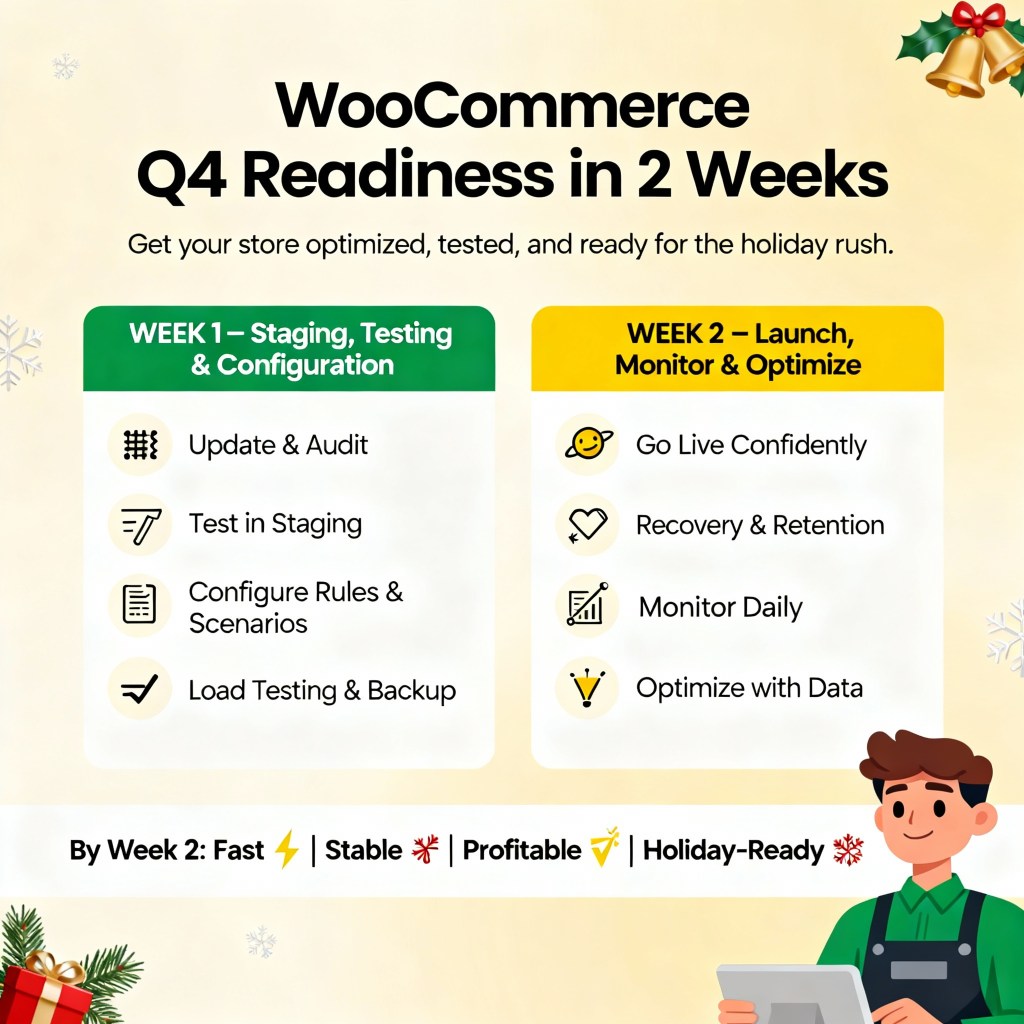
Here’s how to plan it step by step:
Week 1 – Staging, Testing, and Configuration
1. Update and Audit Your Store
Start with the basics. Update WooCommerce, your theme, and all plugins to their latest versions. This ensures HPOS compatibility and prevents bugs that could break checkout during peak traffic.
Run a quick speed test using Google PageSpeed Insights or GTmetrix and note your baseline loading time. You’ll use it later for comparison.
2. Test Plugin Compatibility in Staging
Never experiment on your live site during Q4. Create a staging copy of your store and install these seven plugins: Fraud Prevention, Extra Fees, Flat Rate Shipping, Conditional Payments, Attribute Stock, Request a Quote, and Cart Recovery.
Check if everything works well together. Especially confirm:
- No plugin disables HPOS
- Payment gateways load correctly
- Fees and shipping rates calculate as expected
3. Configure Rules and Scenarios
Now set up your conditions and logic. For example:
- Create a Christmas Eve Fee with Extra Fees Plugin.
- Restrict COD for high-risk ZIPs using Conditional Payments.
- Set shared stock for color variants with Attribute Stock.
Simulate different cart types — small orders, bulk orders, and international orders — to ensure rules apply properly.
4. Load Testing and Backup Setup
Holiday traffic can triple your normal visitor volume. Use tools like LoadImpact/K6 to run a small stress test on your checkout. Then, schedule daily automatic backups through your host or plugin like UpdraftPlus.
Week 2 – Launch, Monitor, and Optimize
1. Go Live Confidently
Once testing is complete, push the changes live. Activate fraud blocking, enable your fee and shipping rules, and switch email automations from “test mode” to live.
2. Launch Recovery and Retention Workflows
Make sure your abandoned cart emails are firing correctly. Use your first few recoveries to check deliverability, link tracking, and coupon usage.
If you use the Request a Quote plugin, test submitting a live quote request and verify the email or PDF workflow from start to finish.
3. Monitor Key Systems Daily
For the first week after launch, review your logs and dashboards every day:
- Fraud logs: any false positives or missed risks?
- Shipping cost accuracy: are surcharges applying correctly?
- Payment gateways: are all visible as expected across regions?
4. Optimize with Real Data
After the first few hundred orders, patterns will appear.
- If you see too many COD returns, restrict COD further.
- If a shipping method is rarely used, hide it for simplicity.
- If cart abandonment is high on mobile, simplify your checkout layout.
By the end of week two, you should have a fast, stable, and conversion-optimized store which has been tested for both performance and profit protection.
Key Metrics to Track During Holiday Sales
Here are the metrics that matter most, what they mean, and how to act on them:
1. Conversion Rate (Desktop vs. Mobile): Over half of your buyers shop on mobile. If mobile conversion drops more than 15% below desktop, your checkout may be too complex or your buttons too small. Simplify forms, enlarge CTA buttons, and enable guest checkout.
2. Average Order Value (AOV) by Payment Type: Certain payment methods attract higher spenders. BNPL and card users often have higher AOV than COD. Highlight BNPL at checkout, or add a small COD surcharge to protect margins.
3. Cart Abandonment and Recovery Rate: 70% of carts never convert but 10–30% can be recovered. Keep monitoring the open rates and click-throughs from recovery emails. Test different subject lines or add social proof (“Only 5 left in stock”).
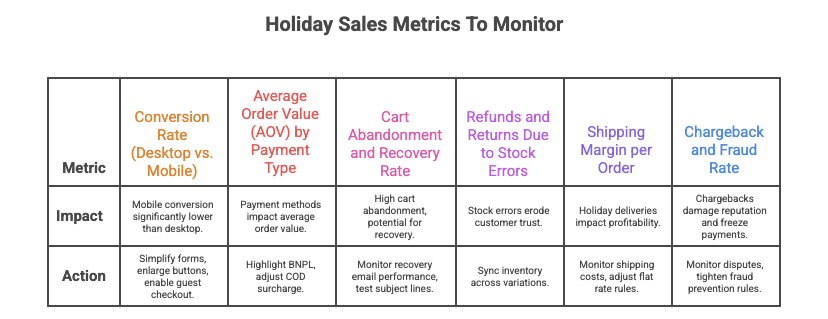
4. Refunds and Returns Due to Stock Errors: Incorrect stock tracking breaks customer trust. Returns caused by “item unavailable” or “wrong variant shipped.” Use the Attribute Stock plugin to sync inventory across variations.
5. Shipping Margin per Order: Holiday deliveries can cost more than you charge. Average shipping cost vs. shipping fee collected should be monitored. Adjust Flat Rate Shipping rules weekly to stay profitable.
6. Chargeback and Fraud Rate: Chargebacks can freeze your payment gateway or damage reputation. Keep a watch on any spike in high-value disputes or repetitive email/IP patterns. Tighten fraud prevention rules for flagged users or risky countries.
Use this data to tweak your pricing, checkout, and marketing before your next big sale weekend.
FAQs:
What is the WooCommerce Store Readiness Checklist for Q4?
The WooCommerce Store Readiness Checklist for Q4 is a step-by-step guide that helps store owners prepare for high-traffic seasons like Black Friday and Christmas. It includes seven essential plugins to improve performance, security, and conversions before the holiday rush.
Why is Q4 preparation important for WooCommerce stores?
Q4 brings massive traffic and order volume due to holiday shopping. Without preparation, stores risk slow loading times, stock issues, and lost sales. Preparing early helps keep your store fast, secure, and profitable during the busiest time of the year.
Which plugins should I install to prepare my WooCommerce store for holidays?
Seven must-have plugins are recommended:
– Fraud Prevention for WooCommerce
– Extra Fees Plugin
– Flat Rate Shipping Plugin
– Conditional Payments Plugin
– Attribute Stock Plugin
– Request a Quote Plugin
– Cart Abandonment Recovery Tool
How early should I prepare my WooCommerce store for Q4 sales?
Start at least two to three weeks before Black Friday. Use the first week to test new plugins on staging and the second week to launch, monitor, and optimize your live store. Early setup prevents downtime or checkout errors during peak traffic.
How can I reduce cart abandonment during holiday sales?
Enable abandoned cart recovery emails with CartFlows or AutomateWoo. Send three reminders: one after 1 hour, another after 24 hours, and a final one after 72 hours with a small discount or testimonial. This can recover up to 30% of lost carts.
Conclusion: Turn Q4 Chaos into Holiday Growth
Preparing your WooCommerce store for holidays is about more than discounts. It’s about stability, clarity, and control.
When you combine these seven plugins i.e. Fraud Prevention, Extra Fees, Flat Rate Shipping, Conditional Payments, Attribute Stock, Request a Quote, and an abandoned cart recovery tool, you cover every major challenge of Q4 ecommerce.
Start setting them up now, test early, and your store will be ready for Black Friday, Christmas, and beyond.

